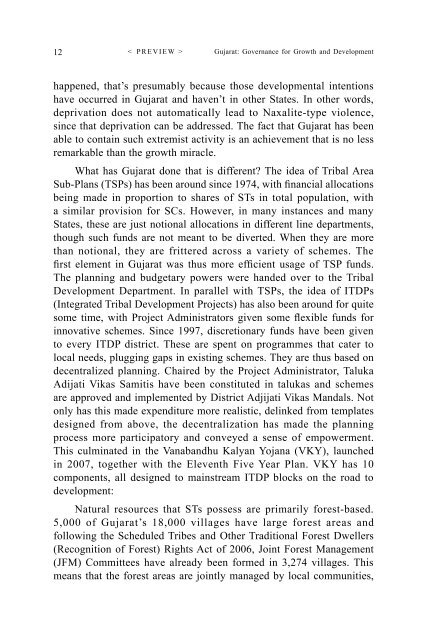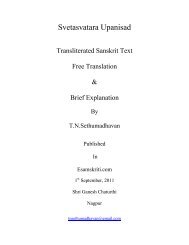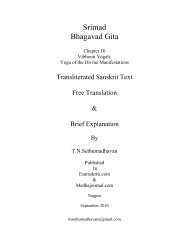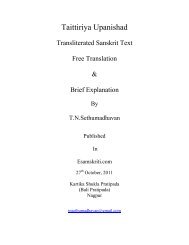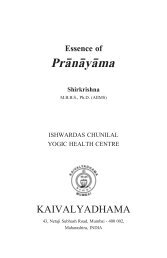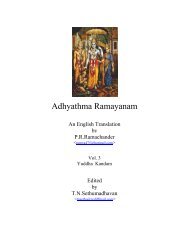Gujarat Governance for Growth and Development ... - Esamskriti.com
Gujarat Governance for Growth and Development ... - Esamskriti.com
Gujarat Governance for Growth and Development ... - Esamskriti.com
You also want an ePaper? Increase the reach of your titles
YUMPU automatically turns print PDFs into web optimized ePapers that Google loves.
12<br />
< PREVIEW > <strong>Gujarat</strong>: <strong>Governance</strong> <strong>for</strong> <strong>Growth</strong> <strong>and</strong> <strong>Development</strong><br />
happened, that’s presumably because those developmental intentions<br />
have occurred in <strong>Gujarat</strong> <strong>and</strong> haven’t in other States. In other words,<br />
deprivation does not automatically lead to Naxalite-type violence,<br />
since that deprivation can be addressed. The fact that <strong>Gujarat</strong> has been<br />
able to contain such extremist activity is an achievement that is no less<br />
remarkable than the growth miracle.<br />
What has <strong>Gujarat</strong> done that is different? The idea of Tribal Area<br />
Sub-Plans (TSPs) has been around since 1974, with financial allocations<br />
being made in proportion to shares of STs in total population, with<br />
a similar provision <strong>for</strong> SCs. However, in many instances <strong>and</strong> many<br />
States, these are just notional allocations in different line departments,<br />
though such funds are not meant to be diverted. When they are more<br />
than notional, they are frittered across a variety of schemes. The<br />
first element in <strong>Gujarat</strong> was thus more efficient usage of TSP funds.<br />
The planning <strong>and</strong> budgetary powers were h<strong>and</strong>ed over to the Tribal<br />
<strong>Development</strong> Department. In parallel with TSPs, the idea of ITDPs<br />
(Integrated Tribal <strong>Development</strong> Projects) has also been around <strong>for</strong> quite<br />
some time, with Project Administrators given some flexible funds <strong>for</strong><br />
innovative schemes. Since 1997, discretionary funds have been given<br />
to every ITDP district. These are spent on programmes that cater to<br />
local needs, plugging gaps in existing schemes. They are thus based on<br />
decentralized planning. Chaired by the Project Administrator, Taluka<br />
Adijati Vikas Samitis have been constituted in talukas <strong>and</strong> schemes<br />
are approved <strong>and</strong> implemented by District Adjijati Vikas M<strong>and</strong>als. Not<br />
only has this made expenditure more realistic, delinked from templates<br />
designed from above, the decentralization has made the planning<br />
process more participatory <strong>and</strong> conveyed a sense of empowerment.<br />
This culminated in the Vanab<strong>and</strong>hu Kalyan Yojana (VKY), launched<br />
in 2007, together with the Eleventh Five Year Plan. VKY has 10<br />
<strong>com</strong>ponents, all designed to mainstream ITDP blocks on the road to<br />
development:<br />
Natural resources that STs possess are primarily <strong>for</strong>est-based.<br />
5,000 of <strong>Gujarat</strong>’s 18,000 villages have large <strong>for</strong>est areas <strong>and</strong><br />
following the Scheduled Tribes <strong>and</strong> Other Traditional Forest Dwellers<br />
(Recognition of Forest) Rights Act of 2006, Joint Forest Management<br />
(JFM) Committees have already been <strong>for</strong>med in 3,274 villages. This<br />
means that the <strong>for</strong>est areas are jointly managed by local <strong>com</strong>munities,


